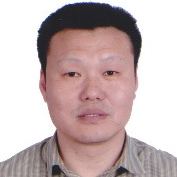Topic Editors


2. Department of Hydraulic Engineering, Faculty of Civil Engineering, TU Delft, 2628 CD Delft, The Netherlands

Sustainable Development of Clean Water and Sanitation
Topic Information
Dear Colleagues,
Currently, approximately 2.2 billion people worldwide lack access to safe drinking water, while 4.2 billion people do not have access to adequate sanitation services. This crisis disproportionately affects women and girls, who are often responsible for collecting water and are vulnerable to violence and the health risks associated with poor sanitation. By utilizing isotopic techniques, the quality and quantity of water resources can be studied. Naturally occurring isotopes in water are used to determine where the water came from, its age, its susceptibility to contamination, and how water resources move and interact above and below ground. Isotopic techniques are also employed to better understand and adapt to the effects of climate change, and to map the size of water resources, including groundwater reservoirs hidden underground. The quality of water is often affected by human activities and infrastructure, making this source of life a threat to life. Water sources can be contaminated with heavy metals, complex organic compounds (such as petroleum byproducts or pharmaceuticals), radioactive isotopes, and trace elements. This can affect not only humans, but all forms of life. Nuclear and isotopic techniques are used to detect and analyze contaminants and track their movement. Certain contaminants in wastewater produced by industrial processes can also be destroyed using techniques such as electron beam irradiation. This can enhance the cleanliness and safety of water for the environment.
Prof. Dr. Rajendra Prasad Singh
Prof. Dr. Chris Zevenbergen
Prof. Dr. Dafang Fu
Topic Editors
Keywords
- clean water
- water sanitation
- water purification
- water reuse
- isotopic techniques
- nuclear techniques
Participating Journals
| Journal Name | Impact Factor | CiteScore | Launched Year | First Decision (median) | APC | |
|---|---|---|---|---|---|---|

Clean Technologies
|
4.7 | 8.3 | 2019 | 33.7 Days | CHF 1600 | Submit |

International Journal of Environmental Research and Public Health
|
- | 8.5 | 2004 | 27.8 Days | CHF 2500 | Submit |

Membranes
|
3.6 | 7.9 | 2011 | 17 Days | CHF 2200 | Submit |

Microorganisms
|
4.2 | 7.7 | 2013 | 15.2 Days | CHF 2700 | Submit |

Water
|
3.0 | 6.0 | 2009 | 19.1 Days | CHF 2600 | Submit |

Separations
|
2.7 | 4.5 | 2014 | 16.3 Days | CHF 2600 | Submit |

Preprints.org is a multidisciplinary platform offering a preprint service designed to facilitate the early sharing of your research. It supports and empowers your research journey from the very beginning.
MDPI Topics is collaborating with Preprints.org and has established a direct connection between MDPI journals and the platform. Authors are encouraged to take advantage of this opportunity by posting their preprints at Preprints.org prior to publication:
- Share your research immediately: disseminate your ideas prior to publication and establish priority for your work.
- Safeguard your intellectual contribution: Protect your ideas with a time-stamped preprint that serves as proof of your research timeline.
- Boost visibility and impact: Increase the reach and influence of your research by making it accessible to a global audience.
- Gain early feedback: Receive valuable input and insights from peers before submitting to a journal.
- Ensure broad indexing: Web of Science (Preprint Citation Index), Google Scholar, Crossref, SHARE, PrePubMed, Scilit and Europe PMC.

